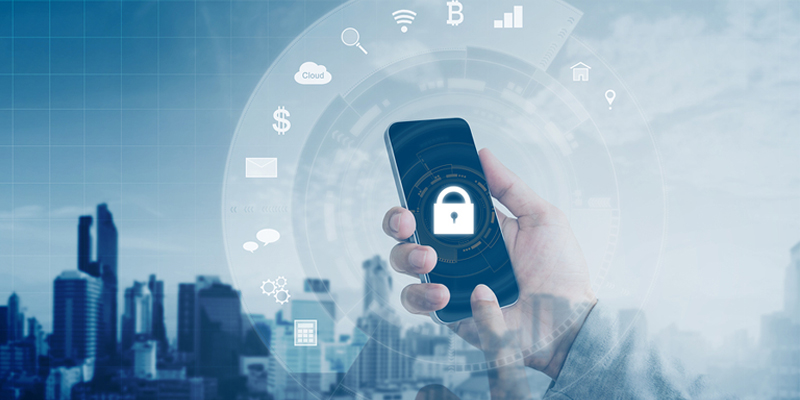
By Jeff Reiter
I conduct a cybersecurity presentation regularly with business audiences and give back some tips that we all can use to step up our awareness and protection from cyber threats.
Despite the business audience focus, smartphones are an important topic because they affect everyone—in business and in our personal lives.
We use these devices in nearly every waking moment of our lives. They are almost always with us—these small-form factor computers.
Here are three important Security Tips you can do yourself, and protect you, your family, friends, and co-workers.
1. Set a PIN or passcode
This is your first line of defense. If someone wants to access your device, they will first need to break this code. This is not an easy task and can operate as a deterrent against theft. Some device manufacturers have an option to automatically wipe your device after a few unsuccessful attempts at your passcode or pin. This way, even if your phone is stolen, your information cannot be accessed.
2. Enable Remote Locate and Wipe Tools
There are thousands of applications out there, and many involve more than just crushing candy or shooting birds at pigs. Certain software can help you locate your lost or stolen device through its GPS. Apple offers a service like this for their mobile devices aptly named Find my iPhone. For Android users, the Android Device Manager offers these services. Windows Mobile users also have this option from the Windows Phone website. Similarly, many third party applications are available in each of the app stores.
3. Turn on Encryption
This makes disassembly of the phone and reading its data in alternate means nearly impossible. IPhones come with encryption enabled by default. Androids come with encryption disabled by default. Your carrier or the manufacturer can help you find the place in Settings to turn this on. Then, if you phone is lost or stolen, reading the data by pulling the components apart will be unsuccessful.
4. Use Secure, Encrypted Text Messaging
When sending sensitive information to others using instant messaging, don’t use the native text messaging. This is fine for conversations, but know that every text message that is sent in SMS (short messaging service)—this is when iPhone users see a message that displays with a green background—is not secure. Each text message is read by automated systems around the world in order to catch things like codes for promotions. So, the love-speak you send is being read. And your casual conversations are read. The remedy: use a secure text messaging app and have your counterpart do the same. Signal.org provides a good solution, as does WhatsApp. When you send passwords to co-workers or loved ones, use these secure communication apps. Oh, and you iPhone users… the blue background doesn’t make your messages encrypted or secure, so you need this too.
5. Update Your Device Immediately When Prompted
Gone are the days when you could say “I’ll wait until that release is out for a few weeks. I don’t want to be a guinea pig.” You just cannot afford the risk anymore. Almost every release on any device—smartphones included—have security updates and security “fixes” embedded within them. The #1 way you get breached on any electronic device is by allowing it to go un-patched and not kept up-to-date. This allows the bad guys to leverage known holes in the technology’s security.
Utilizing an antivirus and malware scanner is never a bad idea. Your phones are mini-computers, and just like your “big” computer—they need to be cleaned up from time to time.
In the end, the number one security measure on your mobile device is you. Be proactive. Protect yourself and your information using the steps above!


